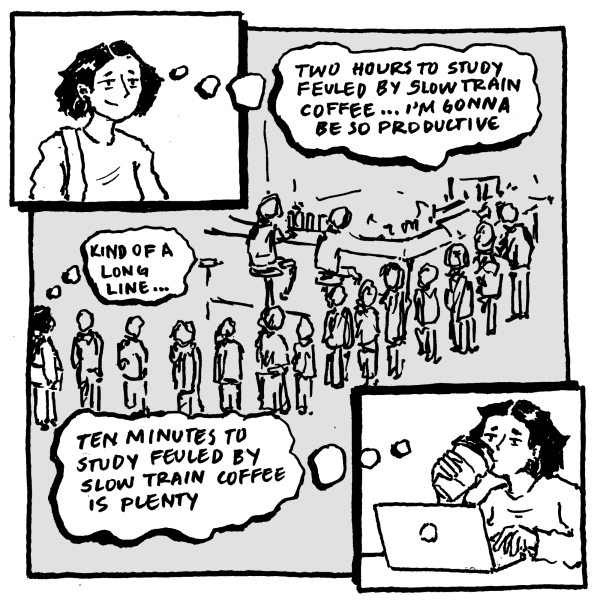Higher Ed Must Recognize Community Responsibilities in Vaccine Rollout
Due to power outages resulting from record low temperatures in Houston last week, Harris County Public Health announced on Monday that it had 8,430 doses of coronavirus vaccines in broken freezers that would expire if they were not distributed by 5 p.m. The department then sent 3,000 doses to Harris County Jail, 600 doses to the Lyndon B. Johnson and Ben Taub Hospitals, 1,000 doses to Houston Methodist Hospital, and 810 doses to Rice University. Rice University officials scrambled to set up the vaccination site and announced that the shots would be available to any “active Rice faculty, staff, or student ages 18 or older” currently on campus “on a first come, first served basis.”
While the circumstances leading to vaccinations at Rice were exceptional, they highlighted the crucial role that colleges and universities might play in the U.S.’s decentralized, chaotic vaccination effort. In the midst of an almost incomprehensible network of state guidelines and county health departments, and with almost no federal guidance, communities are largely left to figure out the complicated logistics of distribution on their own. Because of their existing infrastructure, college campuses across the country have been identified as potential vaccination sites — and many of these institutions are announcing vaccination plans for their campus communities in the coming months.
Oberlin College, along with hundreds of other campuses, has announced a tentative vaccination plan for the spring — but, at least for Oberlin, this proposed course relies on Ohio’s state rollout plan. Several students and faculty members on campus this semester have doubts about vaccination actually happening in this timeline.
However, the few colleges given access to vaccines are operating as sort of ad-hoc distribution centers; they face far less oversight and have even less information than pharmacies and mass vaccination centers and no indication of either timing or supply. The question of campus vaccinations falls within a larger national conversation surrounding the ethics of vaccine distribution — and the myriad contours of privilege along which peoples’ access to shots falls.
NPR reported this week that the high-end national healthcare provider One Medical has been administering vaccines to people deemed ineligible under current health department guidelines — people with connections to company leadership — and that the company was not screening people who signed up through its separate company appointment system for eligibility. The lack of regulation even extends to entire states, where the only thing people need to get a shot is a scheduled appointment and there is no oversight for monitoring eligibility. Well-connected, wealthy people are jumping the line all over the country in increasingly creative ways.
Even in states where eligibility is being closely monitored, murky ethical questions lurk.
The Moderna and Pfizer vaccines must be used within six hours of being thawed. If a pharmacy has extra doses, medical ethicists largely agree that it makes sense to get the shot, because wasting a dose is arguably a more severe ethical offense. The 810 doses at Rice, then, might be justified — they would have been destroyed if the campus community had not acted so quickly.
But college campuses, no matter how insular, do not exist within a vacuum. Harris County, Texas — where Rice is located — is the most populous county in the state, and according to The New York Times faces extremely high barriers to vaccinations. Factors contributing to this include irregular medical care, poor healthcare access combined with lack of healthcare infrastructure and resources, and extreme socioeconomic barriers. In Twitter replies to news stories and images of the scene at Rice, countless people expressed outrage that healthy undergraduate students at an elite private school were getting access to the vaccine while high-risk, majority POC communities just beyond the campus boundaries were overlooked. When college communities receive extra doses for people who are not at high risk or directly in contact with COVID-19 patients, there are many ways to redistribute those resources to those who are at higher risk in and around their immediate community.
Despite individual anxieties, the ethics of vaccine distribution on college campuses are not actually about individual decisions at all. Throughout the pandemic, the absence of any federal guidance has pushed responsibility for COVID-19 safety into an individualized, ‘every-person-for-themselves’ framework. This places the burden of care directly on the shoulders of individuals — no matter that there is almost no support provided for anyone who cannot afford to stay at home, afford expensive safety measures, or is immunocompromised. The vaccination effort is just the latest iteration of these profound inequalities.
The language of “eligibility” and the questions around who “deserves” a vaccine, and in what order, works to push the ethical responsibility onto individuals, and actively obscures the communal reality of immunity and the collective need for widespread clarity and institutional support. Everyone deserves a vaccine because everyone deserves to live — but in the absence of any institutional guidance, the burden of eligibility and communal ethics is convoluted and unequal.
To actually ensure that vaccination happens ethically and efficiently, distribution needs to be funded. It also must be managed, Anne Helen Peterson writes, “as if the people for whom you provide care are precious and worthy, not sources of profit or opportunities for savings and budget cuts.”
In the absence of federal guidance and support, existing institutions hold enormous power. In the absence of federal management, or even the acknowledgment that healthcare is a universal right and not a privilege, institutions of higher education can theoretically fill in some of the gaps — if, that is, they get access to doses at all.
But, provided they receive vaccine doses, these institutions must administer them in a way that is accountable to their wider communities. While it seems to be a pipe dream at this point to demand that institutions have equal access to vaccines, consider the resources that schools like Oberlin, Rice, Boston University, or the Ivy Leagues might have access to compared to community colleges. This makes their decisions about distribution more important than ever. These schools can prioritize frontline staff, including food service, custodial, and administrative workers, and high-risk faculty and students for vaccinations. They can also open their gates, and serve as a community distribution center, for everyone in their immediate area — no college ID required. They can provide healthcare and information services for the whole community.
This is not impossible. Indeed, the University of California, Davis has opened two vaccination clinics, one on the Davis campus and one at UCD Health, in Sacramento, to distribute vaccines to staff, faculty, and community members. If and when supply increases, the university plans to open several more clinics with the express goal of vaccinating vulnerable, underserved community members in the coming months.
But that’s not how most of our country, or our institutions, work. If this year has taught us anything, it’s that none of us exist in a vacuum. The SARS-CoV-2 virus doesn’t obey our physical or societal boundaries, but it does exploit and exacerbate every existing fault line of privilege. And even after 500,000 deaths, and millions more disrupted, upended, and destroyed lives, our institutions still uphold the hyper-individualized, neoliberal status quo. They’ll tell us it could all be so much worse.



